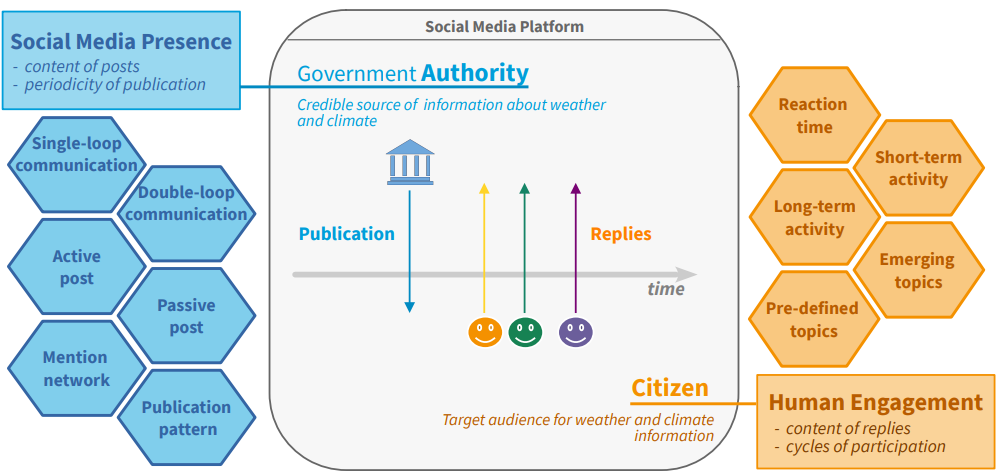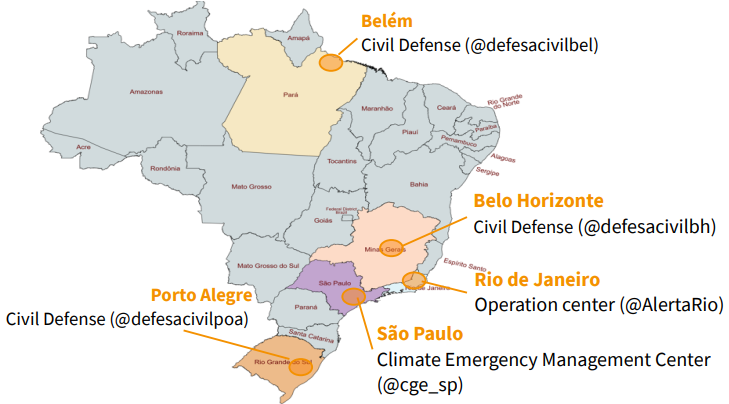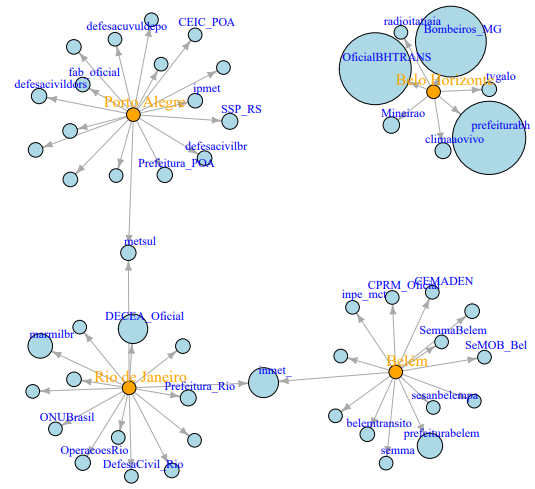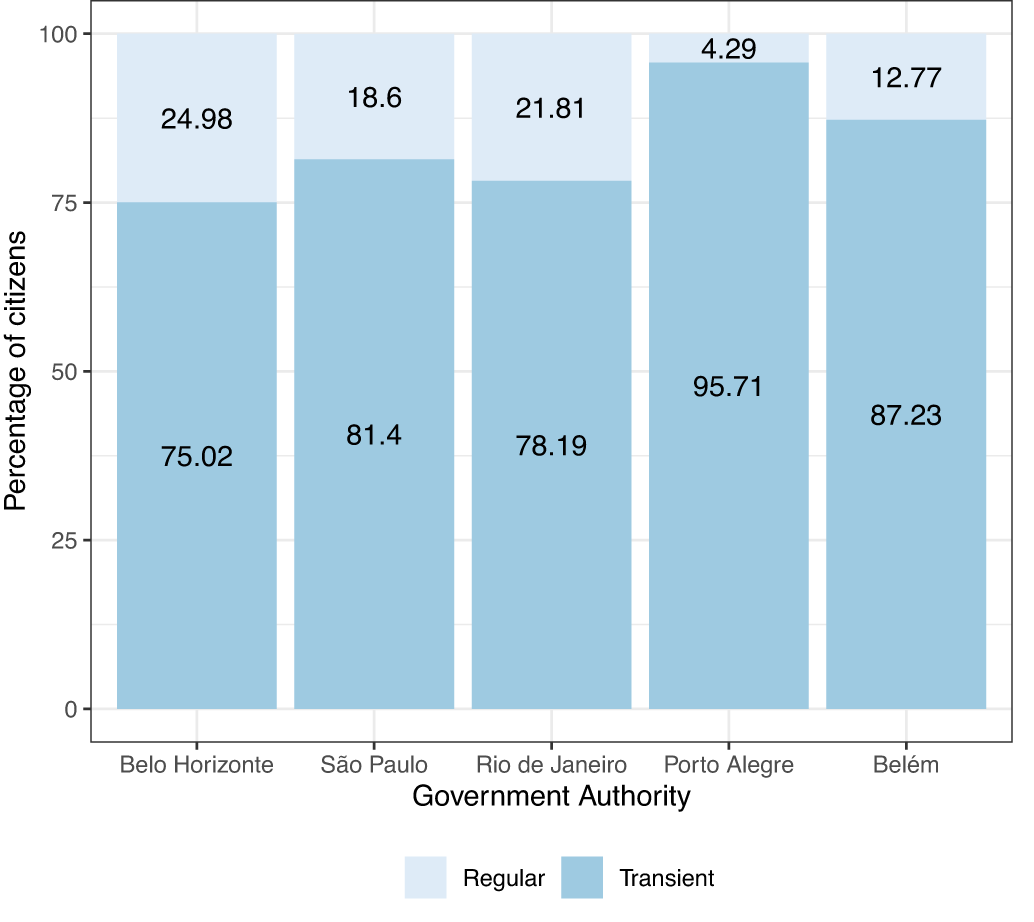How do government climate authorities and citizens interact through social media?
Published in Social Sciences, Computational Sciences, and Arts & Humanities
Local-level climate authorities are established in cities as departments or sectors of city halls. Their job includes keeping citizens informed, reducing vulnerability, and building resilience by implementing climate preparedness and building climate resilience. Here, we analyse a recent study published in npj Climate Action that contributes to the understanding of how climate authorities and citizens interact in social media, seeking climate preparedness and resilience.
Why study the interaction between climate authorities and citizens?
Citizen-authority communication is essential in preparing and adapting to extreme climate events that may cause devastating impacts on infrastructure and loss of human lives. Climate authorities have sought to communicate through social media, but little is known about their communication strategies and the participation of citizens in responding to their publications. Relying on social media for climate adaptation, preparedness, and resilience actions is challenging. Published content should align with the interests and needs of the target audience. Understanding how social media has been used for this purpose allows us to outline its effectiveness and effects on climate preparedness and resilience.
How does the study frame citizen-authority communication?
The study seeks evidence from practice on how climate authorities have dealt with the challenge of communicating with citizens through social media. It focuses on two research questions:
-
- What publication patterns emerge when local-government authorities communicate to the citizens through social media publications?
- How do citizens respond to authorities’ publications?
The questions are framed in the Social Media Presence and Human Engagement conceptual frameworks. The Social Media Presence framework addresses how people and organisations create a social media identity through a pattern or style of publication. It includes, for example, decisions on whether publications invite citizens to post responses and whether authorities converse with citizens who reply to their publications. The Human Engagement framework focuses on how and why people dedicate personal resources (such as time, cognition, and social skills) to an activity. For example, why and how often citizens participate by posting replies in climate authority publications. The figure below summarizes the main elements considered in the frameworks.

Elements of social media presence and citizen engagement.
Source: https://doi.org/10.1038/s44168-023-00080-3
What is the sample of authorities and citizens used in the study?
The analysis covers local-level climate authorities for the Brazilian cities of São Paulo, Belo Horizonte, Rio de Janeiro, Porto Alegre and Belém. These cities are located in different regions of the country and have different climates and large populations. Together, they have over half a million followers on the X platform (formerly known as Twitter). The geographical location and social media handler of the authorities are indicated in the figure below.

Source: Made by Lesandro Ponciano.
Following an observational research approach, the study analyses 10k publications from authorities and their 5k thousand replies received from 2k thousand citizens over one year (July 2021 to July 2022). The study combines statistical modelling, data mining algorithms, and natural language processing to uncover social media presence and engagement characteristics from social media data.
Let's summarise the results.
What publication patterns emerge when climate authorities communicate to the citizens through social media publications?
-
- The publications focus on disseminating information (passive posts). They do not encourage citizens to engage in conversation; when they do engage, the authorities usually do not participate.
- Authorities tend to rely on standardised publications, i.e. they employ a recurring textual structure detectable by a text clustering algorithm. Each recurring textual structure reveals a publication pattern. Typical publication patterns include weather forecasts, rain updates and tide tables disclosure.
- Authorities seek to articulate actions in their posts. A network of mentions can be drawn from authorities' publications. As indicated in the figure below, they mention other authorities, such as city hall, municipal traffic service and the fire department.

Graph of mentions in publications from local government authorities.
Source: https://doi.org/10.1038/s44168-023-00080-3
How do citizens respond to authorities’ publications?
-
- Citizens reply to the authorities seeking correcting, complementing, informing and thanking. Their replies correct information about their locations, complete with further information, update with current information, disseminate donation actions, and express gratitude.
- Citizen responses rarely mention “climate change” or “global warming”. There are signs that they do not associate the local event reported by the authority with such global phenomena.
- Citizen engagement is short-term. They respond within minutes or hours. But most react to authority once and never interact again (transient behaviour), as indicated in the figure below. Regular citizens, who keep interacting in the long term, account for most of the responses to the authority.

Regular and transient citizen engagement in replying to the climate authority.
Source: https://doi.org/10.1038/s44168-023-00080-3
Overall, the results deepen our understanding of human behaviour in sociotechnical systems in the context of weather and climate. It provides new insights into how citizen-authority communication unfolds on social media during preparedness and resilience actions.
What about the implications of the results?
The results allow us to question whether social media platforms are adequate for the purpose for which the climate authorities and citizens have used them. The following reflections are critical.
-
- Suitability of social media for climate communication. In geographically large cities, citizens may experience information overload when the authorities report on climate events happening in parts of the city that are irrelevant to them. It is an effect of the authority publishing information from all parts of the city in a single account on social media and the platform not distributing information taking into account the geographic position of the citizen. Information overload can lead citizens to develop the behaviour of ignoring information published by the authorities.
- Keeping citizens updated about unfolding climate events. There is a risk of ineffective communication when the authority tries to keep citizens updated on the evolution of climate events through continuous social publications (currently approaching dozens of publications per day). Furthermore, updating content via social media can become ineffective for citizens who do not use temporal ordering in their feed on the platform, as they may receive the message in a different order than that published by the authority.
- Dynamics of trust between citizens and climate authorities. Corrections and additions published by citizens may be the early signs of distrust that could compromise climate preparedness and resilience. If the citizens perceive the information as inaccurate, they may not trust new information in the future.
- Social media platforms’ evolution and usefulness. The ecosystem of social media platforms is evolving; some platforms are changing their functionalities (such as X), and others are emerging with new interaction paradigms (such as Mastodon). Thus, climate authorities must constantly reflect on what an effective social presence means and how to build it.
Explore the article to learn all the details:
Ponciano, L. How citizens engage with the social media presence of climate authorities: the case of five Brazilian cities. npj Clim. Action 2, 44 (2023). https://doi.org/10.1038/s44168-023-00080-3
Follow the Topic
-
npj Climate Action

This journal considers research that explores all aspects of mitigating the hazardous effects of global climate change.
Related Collections
With Collections, you can get published faster and increase your visibility.
AI-Driven Systemic Change for Climate Resilience
Publishing Model: Open Access
Deadline: Feb 01, 2026
Climate Activism: Bridging Science, Advocacy, and Public Engagement
Publishing Model: Open Access
Deadline: May 28, 2026


Please sign in or register for FREE
If you are a registered user on Research Communities by Springer Nature, please sign in